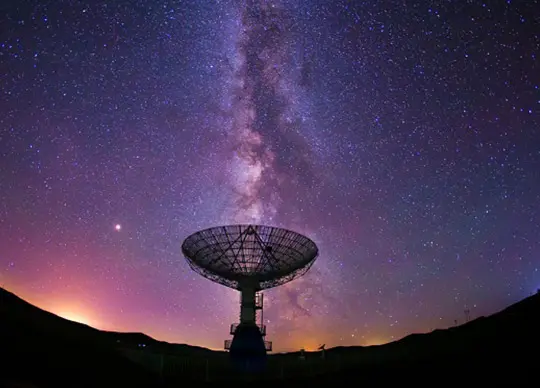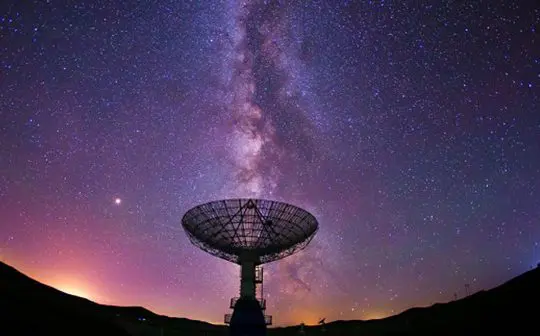
Construction is commencing on the world’s largest radio telescope today.
Minister for Industry and Science Ed Husic officiated at the ground-breaking ceremony on Wajarri Yamaji Country, 800 kilometres north of Perth.
An international collaboration of 16 countries, the Square Kilometre Array Observatory (SKAO) will be the largest science facility on Earth, combining sister telescope sites in Australia and South Africa.
Minister Husic said the project is an extraordinary feat of astronomy, scientific infrastructure and international cooperation.
“This first-of-its-kind technology will allow astronomers to tackle fundamental scientific questions, ranging from the birth of the Universe to the origins of life,” he said.
“We also expect the SKA to attract an estimated $1.8 billion in foreign income flows to Australia over its first 30 years and create around 350 medium-term jobs
Minister Husic announced that the SKA Observatory had awarded contracts valued at over $200 million to Australian business Ventia to begin infrastructure projects on-site including power and fibre networks, and the construction of buildings for data processing equipment.
“Australia’s membership of the SKA Observatory is not only good for industry today but will inspire generations of Australians to dream big and follow a career in STEM,” he said.
“It will also provide an incredible platform for the nation to show our incredible scientific knowledge and research on the world stage.”
Western Australia’s Deputy Premier and Minister for Science, Roger Cook MLA, said he was proud to support the SKA project and welcomed its global impact.
“SKA-Low will be the world’s largest and most capable low-frequency radio telescope. Data collected in Western Australia will expand our very understanding of the universe and drive technological developments across the globe,” Deputy Premier Cook said.
“Beyond the scientific benefits, the SKA project will provide jobs for engineers, scientists and technicians around the world, including in Western Australia.”
“The Western Australian Government will continue to work collaboratively with the Australian Government, CSIRO, SKAO and the Wajarri Yamaji community to ensure the benefits of this landmark project are delivered at home and abroad.”
More information is available at www.ska.gov.au. Download photos and images at this link.
BACKGROUND
The SKA-Low telescope will be located at Inyarrimanha Ilgari Bundara, the CSIRO Murchison Radio-astronomy Observatory. It will consist of 131,072 antennas, each two metres tall and shaped like Christmas trees, receiving low-frequency radio waves.
The SKA Observatory is expected to produce an average of eight terabits of data every second, producing a challenge and opportunity for data scientists and engineers.
Ventia, which will work on some of these challenges, is an essential services provider with more than 35,000 employees across Australia and New Zealand and will be responsible for developing the essential infrastructure to support the telescope.
“Mid West and Wajarri Yamaji businesses will play a big part in SKA construction. Ventia will work with these businesses to deliver telescope infrastructure. A separate SKA contract to build the main road and airstrip is reserved for Mid West businesses,” Mr Husic said.
“Beyond this, Australian organisations and businesses will also be at the forefront of meeting the technical and big data challenges of this global mega-science endeavour.”
Contracts worth more than $40 million have been awarded to CSIRO, Australia’s national science agency; the University of Western Australia and Curtin University nodes of the International Centre for Radio Astronomy Research; and Fourier Space, for work on technical systems and software that will underpin the operation of the SKA telescopes.
Inyarrimanha Ilgari Bundara, the Wajarri name for CSIRO’s Murchison Radio-astronomy Observatory, means ‘Sharing the Sky and Stars’ and was selected through a competition held in the Wajarri Yamaji community.
Minister Husic said it had been invaluable to work with the Wajarri Yamaji community to ensure the construction protects and respects their traditional lands.
“For tens of thousands of years, the Wajarri Yamaji have stood on Country and observed the stars. The observatory site name appropriately acknowledges this.”
The SKA Observatory, with headquarters in the United Kingdom and offices in Australia and South Africa, will build and operate the cutting-edge telescopes: the low-frequency array in Australia on Wajarri Country; and the mid-frequency array in the Karoo in South Africa.





